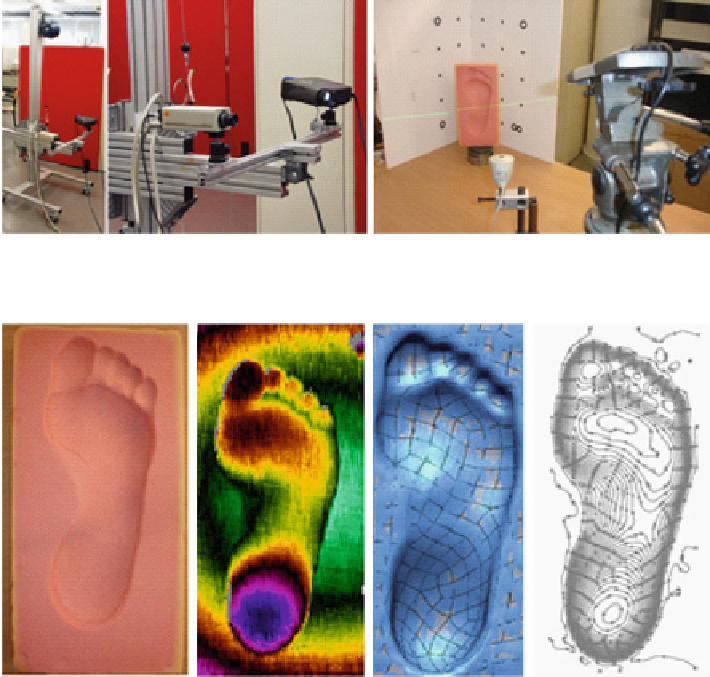Biomedical Engineering Reference
In-Depth Information
Fig. 6
(
left
) Coherent fringe projector and (
right
) simple set up for 3D scanning of plantar
impression
Fig. 7
Results from methodology used to study plantar topography population: (from
left
to
right
)
sponge with plantar impression, 3D scanning that leads to 3D models and 3D models analysis
[
44
]. The second (right), also shows a set-up including a camera, a laser and the
target. This system has appropriate modeling reconstruction software to obtain
plantar impression geometry with laser stripes.
By creating a point cloud taken from foot impression, it is possible to have
a functional plantar impression 3D model, which was used, for example, to
characterize plantar topography with the purpose of creating a database of obese
population in Portugal, during 2009 and 2010. With the help of reverse engineering,
having 3D foot CAD models, one can analyze strain and stress with finite element
methodologies (Fig.
7
) and determine simple prototype solutions to improve
comfort for each population subject [
4
].
It is also possible to have real-time 3D scanning with some of the same optical
techniques, but for now, the hard work in real-time it is to fuse images from different
sides of the object to reconstruct the 3D model.

